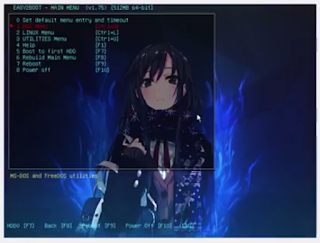I have updated the USB_BOOT CD ISO file to use the latest version of grub4dos. The CD may now work with a wider range of USB 2.0 controllers. Download USB_BOOT_v2.ISO from here in the Alternate Downloads Areas and burn it to a CD (remember those?).
Latest v2.2 IS HERE.
The CD is useful for systems that will not boot straight from a USB Flash drive or USB HDD but will boot from a USB CD (or IDE\SATA CD-ROM drive).
Note that modern USB 2.0/3.0 systems will probably not work (even if you use a USB 2.0 port), but these modern systems should boot from any USB drive anyway.
 |
| USB_BOOT_v2 CD with latest grub4dos version |
- The USB_BOOT CD will boot to a grub4dos menu and then will automatically install the grub4dos USB 2.0 read\write driver.
- If no USB drive is detected, it will then automatically run Plop! to load a USB 2.0 read-only driver.
- If a driver is loaded successfully, it should then boot from a USB drive (e.g. an Easy2Boot USB drive).
The CD is useful for systems that will not boot straight from a USB Flash drive or USB HDD but will boot from a USB CD (or IDE\SATA CD-ROM drive).
Note that modern USB 2.0/3.0 systems will probably not work (even if you use a USB 2.0 port), but these modern systems should boot from any USB drive anyway.









